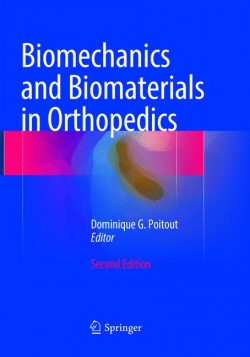This book deals with the various aspects viz., the disease, geographical distribution, symptoms on different hosts, host range, yield losses, and disease assessment method, while detailed description on pathogen include taxonomic position, phylogeny, variability, sporulation, perpetuation, and spore germination, host-parasite interactions in the form of seed infection, disease cycle, process of infection, and pathogenesis, epidemiology, forecasting, fine structures, biochemical changes, and phytotoxins, host defence mechanism, techniques to study host-parasite relationships, and management practices including cultural, chemical, biological control practices, and deployment of host resistance. The last section deals with gaps in our understanding, and knowledge about management of these diseases, techniques for the diagnosis of disease and offer suggestions for future research priorities. Each aspect has been vividly illustrated with photographs, histograms, figures, tables, electron micrographs for stimulating, effective and easy reading and understanding. We are sure that this comprehensive encyclopaedic treatise on “Alternaria diseases of crucifers” will be of immense use to the researchers, teachers, students and all others who are interested in the diagnosis and management of Alternaria diseases of crucifers world over.
Four species of Alternaria are wide spread and most devastating on cruciferous oil yielding crops, vegetables, forage crops, ornamental plants, and numerous weeds all over the world. The damage to the plants is in the form of infections on seed in the soil during sowing, on seedlings during emergence and growth, on stem, leaves, inflorescence, pods and finally to the seed causing yield losses in seed quantity and quality.
1. Introduction.- 2. The Disease.- 3. The Pathogen.- 4. Infection Process, Pathogenesis and Disease Cycle.- 5. Epidemiology and forecasting.- 6. Pathogenic Variability.- 7. Fine Structures and Electron Microscopy.- 8. Biochemistry of Hose-Pathogen-Interaction.- 9. Resistance.- 10. Phytotoxins.- 11. Disease Management.- 12. Techniques.- 13. Future Strategies and priorities for the management of alternaria diseases of crucifers.
Dr. G. S. Saharan PhD renowned educationalist, plant pathologist, has contributed in the diverse fields of Plant Pathology including standardization of artificial inoculation techniques, identification of resistance sources, pathogenic variability, genetics of host-parasite interaction, epidemiology, and management of several diseases. He has about 250 publications in peer reviewed journals, 6 books, and supervised over 11 MSc and PhD students. Professor Saharan is internationally recognized, a visiting Professor at the University of Alberta, Edmonton, Canada (1991 and 1994), Saskatoon Research Station, Canada (1991, 1994, 1997), and Rothamsted Research, UK (1994, 1997). He has been on the panel of Experts of SAUs, ICAR, CSIR, UGC, and DBT in India.
Dr. Naresh Mehta PhD, Associate Dean, Professor (Plant Pathology), gold medalist, educationist, plant pathologist, has contributed in diverse field of plant pathology covering pathogenic variability, genetics of host pathogen interaction, epidemiological studies, identification of resistant sources, biochemical/genetical basis for resistance, residual analysis of fungicides and disease management. He has
published more than 96 research papers in peer reviewed journals, 2 books, 10 manuals, 8 review articles, 18 book chapters, 18 lead lectures in the international and national conferences, 79 research papers presentations in the International/National conferences. He has supervised 7 M.Sc. and Ph.D students. Professor Mehta has been admitted as Fellow of all the three prominent Plant Pathological Society of India, councilor (North Zone), ISMPP, Editor- in-Chief, ISMPP and member of Editorial board of INSOOP and Indian Phytopathological Soc.(IPS), New Delhi, India. Professor. Mehta has been a visiting scientist to University of Alberta, Edmonton, Canada and invited to deliver lecture in the 9th International Congress of Plant Pathology at Torino, Italy. Professor. Mehta is on the panel of experts of SAUs.
Dr. P. D. Meena PhD is presently working as Principal Scientist (Plant Pathology) at ICAR-Directorate of Rapeseed-Mustard Research, Bharatpur (Rajasthan), India. He has made important contributions to the various aspects including resistance, epidemiology, forecasting, biocontrol for the management of rapeseed-mustard diseases. He has published about 60 research papers, 2 books, 4 bulletins and has supervised 9 MSc and co-supervised a PhD student. He has been honored with Fellow of ISMPP, PPAI, ISOR and Dr PR Kumar Outstanding Brassica Scientist Award (2011) of SRMR and Best Scientist Award of DRMR for 2012–2013. Meena is internationally recognized and has been worked at Rothamsted Research, UK (2007).
This book deals with the various aspects viz., the disease, geographical distribution, symptoms on different hosts, host range, yield losses, and disease assessment method, while detailed description on pathogen include taxonomic position, phylogeny, variability, sporulation, perpetuation, and spore germination, host-parasite interactions in the form of seed infection, disease cycle, process of infection, and pathogenesis, epidemiology, forecasting, fine structures, biochemical changes, and phytotoxins, host defence mechanism, techniques to study host-parasite relationships, and management practices including cultural, chemical, biological control practices, and deployment of host resistance. The last section deals with gaps in our understanding, and knowledge about management of these diseases, techniques for the diagnosis of disease and offer suggestions for future research priorities. Each aspect has been vividly illustrated with photographs, histograms, figures, tables, electron micrographs for stimulating, effective and easy reading and understanding. We are sure that this comprehensive encyclopaedic treatise on “Alternaria diseases of crucifers” will be of immense use to the researchers, teachers, students and all others who are interested in the diagnosis and management of Alternaria diseases of crucifers world over.
Four species of Alternaria are wide spread and most devastating on cruciferous oil yielding crops, vegetables, forage crops, ornamental plants, and numerous weeds all over the world. The damage to the plants is in the form of infections on seed in the soil during sowing, on seedlings during emergence and growth, on stem, leaves, inflorescence, pods and finally to the seed causing yield losses in seed quantity and quality.
Comprehensively accounts diseases of the plant family Brassicaceae
Compiles state-of-the-art research of eminent scientists in techniques of disease management in Brassicaceae
Systematically presents the nuances of plant pathogen interaction




